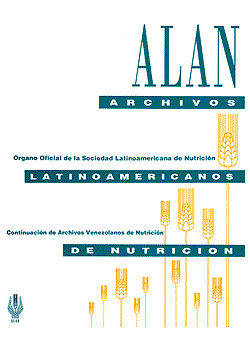Actividad antioxidante y quelante de sistemas hidrocoloides mixtos formados por hidrolizados proteicos de Phaseolus vulgaris endurecido y goma modificada de flamboyán (Delonix regia)
DOI:
https://doi.org/10.37527/2021.71.3.005Palabras clave:
Goma de Flamboyán, Frijol Endurecido, Hidrolizado Enzimático, Actividad Antioxidante, Sistemas Hidrocoloides Mixtos, Flamboyant Gum, Hard to Cook Bean, Enzymatic Hydrolyzate, Antioxidant Activity, Mixed Hydrocolloid SystemResumen
Las proteínas y polisacáridos con frecuencia son utilizados simultáneamente en la industria de alimentos. Las interacciones entre ambos biopolímeros juegan un papel importante en la estructura y estabilidad de muchos alimentos procesados ya que pueden resultar en un sistema con propiedades bioactivas diferentes como ocurre en el caso de las funcionales. Objetivo. Evaluar los cambios en la capacidad antioxidante de un sistema hidrocoloide mixto formado por un hidrolizado enzimático proteico de frijol endurecido (P. vulgaris) y goma modificada de flamboyán (Delonix regia) (SHM). Materiales y métodos. El estudio se hizo entre febrero-octubre, 2014, en Mérida, México. Se modificó enzimáticamente el concentrado proteico de P. vulgaris con Pepsina-Pancreatina® y la goma extraída del flamboyán mediante carboximetilación, preparando dispersiones al 1% de cada uno de los biopolímeros, determinado la fluorescencia intrínseca de Trp (FIT) como indicador de la interacción entre ambos biopolímeros y la actividad antioxidante y quelante del sistema resultante. Resultados. Se obtuvo un hidrolizado proteico extensivo con 28,8% de grado de hidrólisis y una goma de flamboyán con grado de sustitución de 0,91. La mayor interacción entre ambos biopolímeros, se obtuvo empleando una relación 5:1 del SHM a pH 4 de acuerdo con el valor de FIT. Conclusiones. Los sistemas hidrocoloides mixtos preparados con hidrolizado extensivo de las proteínas Phaseolus vulgaris y goma modificada de flamboyán presentaron un incremento en la actividad antioxidante, respecto del hidrolizado dependiendo del mecanismo de oxidación, así como de las condiciones de pH en que se encuentra el sistema y la interacción entre ambos componentes.
Descargas
Publicado
Cómo citar
Número
Sección
Licencia
Derechos de autor 2022 Santiago Gallegos Tintoré, Beatriz Eugenia Guzmán Mendez, María Eugenia Jaramillo Flores, Luis Chel Guerreo, David Betancur Ancona

Esta obra está bajo una licencia internacional Creative Commons Atribución-NoComercial 4.0.
Usted es libre de:
Compartir — copiar y redistribuir el material en cualquier medio o formato
Adaptar — remezclar, transformar y construir a partir del material
La licenciante no puede revocar estas libertades en tanto usted siga los términos de la licencia
Bajo los siguientes términos:
Atribución — Usted debe dar crédito de manera adecuada, brindar un enlace a la licencia, e indicar si se han realizado cambios. Puede hacerlo en cualquier forma razonable, pero no de forma tal que sugiera que usted o su uso tienen el apoyo de la licenciante.
NoComercial — Usted no puede hacer uso del material con propósitos comerciales.
No hay restricciones adicionales — No puede aplicar términos legales ni medidas tecnológicas que restrinjan legalmente a otras a hacer cualquier uso permitido por la licencia.




